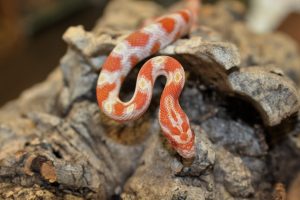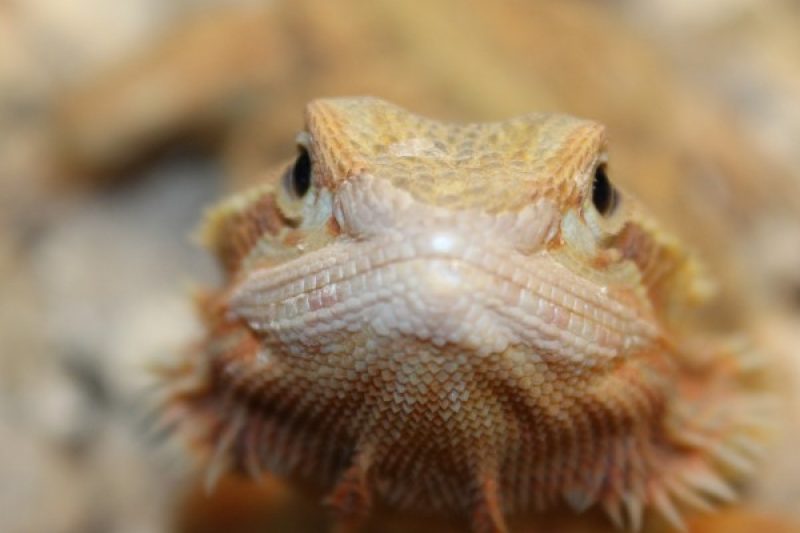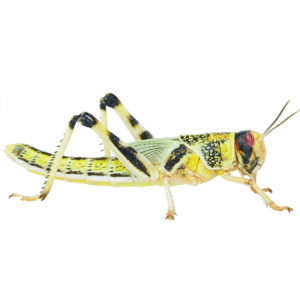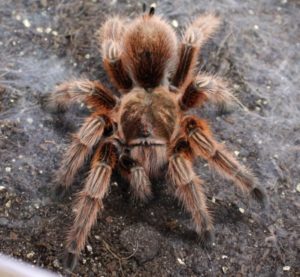
New Pet Owner’s Responsibility Guide
Welcoming a reptile into your home is exciting, but it also comes with important responsibilities. Here are key reminders to help you provide the best

We are often asked – by both new keepers and old hands alike – how to recognise the signs of illness in reptiles. It’s certainly not as easy as it is in domestic mammals; these animals have evolved over millions of years to hide any signs of weakness that might alert a predator that they’ll make an easy meal. So you might think that it’s impossible.
It’s not.
Here are a few tips on how to recognise when your pet reptile is feeling under the weather, and some suggestions on what you should do if they are.
First, observe your reptile. When you have a healthy, happy, relaxed reptile they will behave in a certain way. They will be interested in food, they will look around themselves, they will react to stimuli, they will move smoothly. Nocturnal animals will be out at night, diurnal animals will be out in the daytime, and some will be a little of column A, and a little of column B.
Look at the physical condition of your pet. Eyes should be clear and bright, vents (bottoms) should be clean, with no staining or discharge. There should be no shed skin stuck around claws or on tail tips, no open wounds, no lumps or bumps. When you run your hands over your pet’s skin, they should be just as happy to be touched anywhere; a sudden flinch can indicate pain.
In short, a healthy animal looks healthy. If you observe your animal regularly, you will become familiar with what is normal; what we are looking for above all is change. What is normal behaviour in one Royal python might be unusual for another – but if you know how your animal behaves when it is well, then you will spot the change that much quicker when it is not. If it sheds its skin in a particular way and suddenly it does it differently, you’ll spot it.
So the first step is to familiarise yourself with what is normal.
Let’s say you’ve noticed something is ‘off’ about your pet. His behaviour has changed, he isn’t as interested in his food, and he’s hiding when he would normally be out and about. There are a few things we need to check before we panic.
This is the big one. All reptiles are ectothermic, which means they don’t regulate their body temperature internally – as mammals and birds do – they use the outside environment to warm up or cool down as required. Every reptile has a preferred temperature range within which they feel most comfortable.
Your pet should have a hot spot which runs down to a cooler area. This is different for all species, so make sure that you know what temperatures your pet will be comfortable in. These should be checked regularly, and if your pet appears even slightly off colour then check again. Don’t guess, don’t use a vague indicator (like dial or liquid crystal thermometers), use a good quality digital thermometer, and take readings where your pet will be sitting. So not the air near the roof, but the temperature at substrate level, in their hides, the places where they spend time.
Check again, and check what they are supposed to be. Change if necessary.
Your thermometer is your friend. Use it!
Has anything been changed recently? A lot of reptiles are territorial, and appear to become upset when their environment is changed significantly. Has the housing been moved? Have you changed substrate? New branches or bowls?
Double check the requirements of your pet. A species that originates from a forested area will be unhappy in a desert setup, and vice versa. A lizard accustomed to digging in substrate might become distressed if it’s suddenly transferred to cage carpet, or slate. Some won’t care!
And check your temperature again, because it’s just THAT important. (need a thermometer? click here to buy one now!)
Has it changed? Or has your pet become addicted to a food which is inherently unhealthy? Bearded dragons and tortoises are experts at training their owners to give them the foods they like – and just like us, they do seem to love foods that aren’t always good for them!
For lizards and amphibians, always use a good calcium and multivitamin and mineral supplement.
Does your pet always have access to clean, fresh water? Again, check what the requirements of your pet are; chameleons need moving water, and Uromastyx are usually kept without water at all.
(Temperature. What’s it doing right now?)
UVB is enormously important, even for species that have traditionally been kept without it. If you don’t have it, then it’s worth considering adding it. If you do have it, then think about how old your bulb is. UVB bulbs have a finite lifespan, and unfortunately continue to give out visible light long after they have stopped giving out the life-enhancing wavelengths that are so vitally important to our pets.
If it’s been more than a year, replace your UV bulb!
(Have you checked your temperature today?)
What time of year is it? A lot of snakes are very seasonal feeders, and bearded dragon owners will be very familiar with the spectre of brumation. We always know when there is snow coming, because suddenly we get an awful lot of bearded dragon owners calling us up worried about the fact that their dragons have gone to sleep!
Is it the breeding season? A lot of male animals will have ladies on the brain, and will be more unsettled than usual. Females will often be more concerned about finding a good spot to lay eggs than about eating, even if they live alone.
(What is the night time temperature doing?)
The vast majority of reptile illnesses are husbandry related – which means that they can be prevented. As soon as you observe your pet behaving in a fashion that causes you concern about their health, check all of the above. Look at your setup in the same way that you would if you were going to buy it from someone; go over it with a fine tooth comb, consider the lighting, the heating, the substrate, the positioning – and above all, the temperature.
So let’s assume everything is fine, all parameters are within normal range and your pet isn’t getting excited about the breeding season or trying to hibernate because there’s a snow storm coming.
Now is the time to physically examine your pet. Any lumps or bumps? Wounds? Are their eyes bright? Look for discharge, cloudiness, stuck shed or retained eyecaps in snakes. Is their vent clean? And speaking of bottoms, what are their faeces like? Are they looser than normal, or more dry, has the smell or colour changed?
That sounds revolting, true. But you can tell an awful lot about the health of an animal from its faeces, and if you know what’s normal you’ll spot any changes a lot more quickly.
At this point it’s time to call the vet. We can help you with husbandry queries, we can advise on the sort of changes we would expect to see across the change of seasons. We are familiar with healthy animals, and we see the common problems. But there is one thing we cannot emphasise enough, and that is that if you think your pet is ill—
If you don’t have a specialist close by, then call your local practice. More and more veterinary practices these days have at least one vet who is interested in exotics, and even if they don’t they will know someone locally who does. They will have an out of hours service so if you find yourself presented with a problem in the middle of the night there will be someone to speak to on the end of the phone.
Why go to them and not us if they’re not specialists? Because if your pet is sick and dehydrated they can put it on a drip. They have access to medicines and equipment that we do not. They can diagnose and they can refer you to a specialist, if that is what’s required. We can’t!
We are more than happy to help and advise, but if you take anything from this article we hope it’s that temperature is important, and your vet really can help!
Did you find this blog useful? Check our care hub for more tips.

Welcoming a reptile into your home is exciting, but it also comes with important responsibilities. Here are key reminders to help you provide the best

Calling all reptile keepers and bug lovers! Stock up and earn rewards every time you purchase live foods in-store. 🦗 Get 50 Bonus Points When

Welcome to Evolution Reptiles’ guide to tarantula care! Whether you’re a seasoned arachnid enthusiast or just starting your journey into the fascinating world of these
Copyright 2021 Evolution Reptiles
All rights reserved.